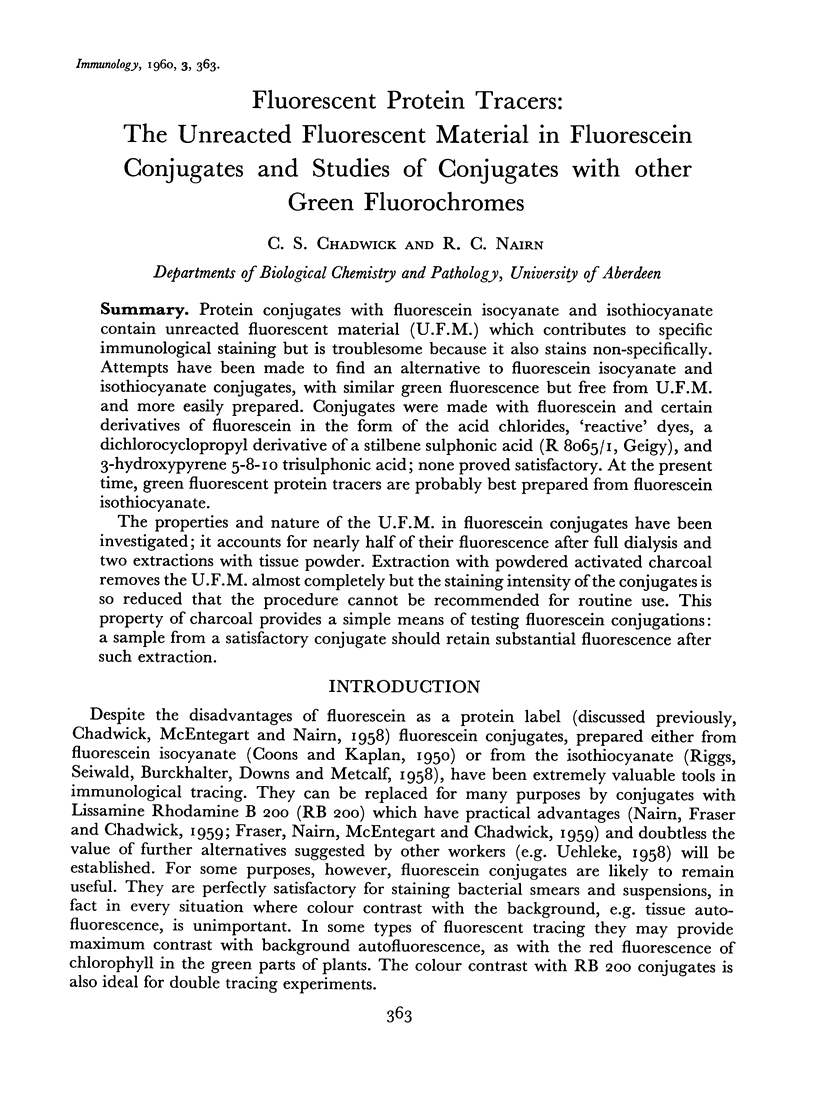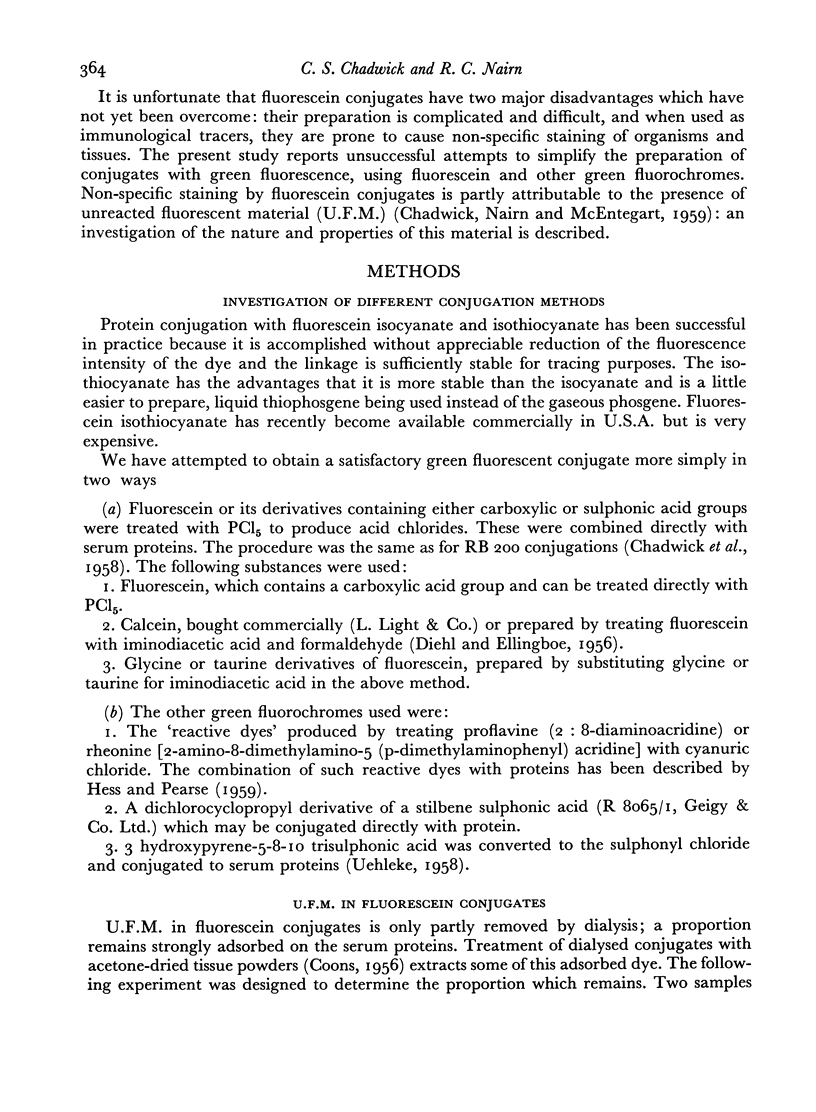Abstract
Protein conjugates with fluorescein isocyanate and isothiocyanate contain unreacted fluorescent material (U.F.M.) which contributes to specific immunological staining but is troublesome because it also stains non-specifically. Attempts have been made to find an alternative to fluorescein isocyanate and isothiocyanate conjugates, with similar green fluorescence but free from U.F.M. and more easily prepared. Conjugates were made with fluorescein and certain derivatives of fluorescein in the form of the acid chlorides, `reactive' dyes, a dichlorocyclopropyl derivative of a stilbene sulphonic acid (R 8065/1, Geigy), and 3-hydroxypyrene 5-8-10 trisulphonic acid; none proved satisfactory. At the present time, green fluorescent protein tracers are probably best prepared from fluorescein isothiocyanate.
The properties and nature of the U.F.M. in fluorescein conjugates have been investigated; it accounts for nearly half of their fluorescence after full dialysis and two extractions with tissue powder. Extraction with powdered activated charcoal removes the U.F.M. almost completely but the staining intensity of the conjugates is so reduced that the procedure cannot be recommended for routine use. This property of charcoal provides a simple means of testing fluorescein conjugations: a sample from a satisfactory conjugate should retain substantial fluorescence after such extraction.
Full text
PDF







Selected References
These references are in PubMed. This may not be the complete list of references from this article.
- FRASER K. B., NAIRN R. C., McENTEGART M. G., CHADWICK C. S. Neurotropic and non-neurotropic influenza-A infection of mouse brain studied with fluorescent antibody. J Pathol Bacteriol. 1959 Oct;78:423–433. doi: 10.1002/path.1700780209. [DOI] [PubMed] [Google Scholar]
- HESS R., PEARSE A. G. Labelling of proteins with cellulose-reactive dyes. Nature. 1959 Jan 24;183(4656):260–261. doi: 10.1038/183260a0. [DOI] [PubMed] [Google Scholar]
- MARSHALL J. D., EVELAND W. C., SMITH C. W. Superiority of fluorescein isothiocyanate (Riggs) for fluorescent-antibody technic with a modification of its application. Proc Soc Exp Biol Med. 1958 Aug-Sep;98(4):898–900. doi: 10.3181/00379727-98-24222. [DOI] [PubMed] [Google Scholar]
- NAIRN R. C., FRASER K. B., CHADWICK C. S. The histological localization of renin with fluorescent antibody. Br J Exp Pathol. 1959 Apr;40(2):155–163. [PMC free article] [PubMed] [Google Scholar]
- RIGGS J. L., SEIWALD R. J., BURCKHALTER J. H., DOWNS C. M., METCALF T. G. Isothiocyanate compounds as fluorescent labeling agents for immune serum. Am J Pathol. 1958 Nov-Dec;34(6):1081–1097. [PMC free article] [PubMed] [Google Scholar]


